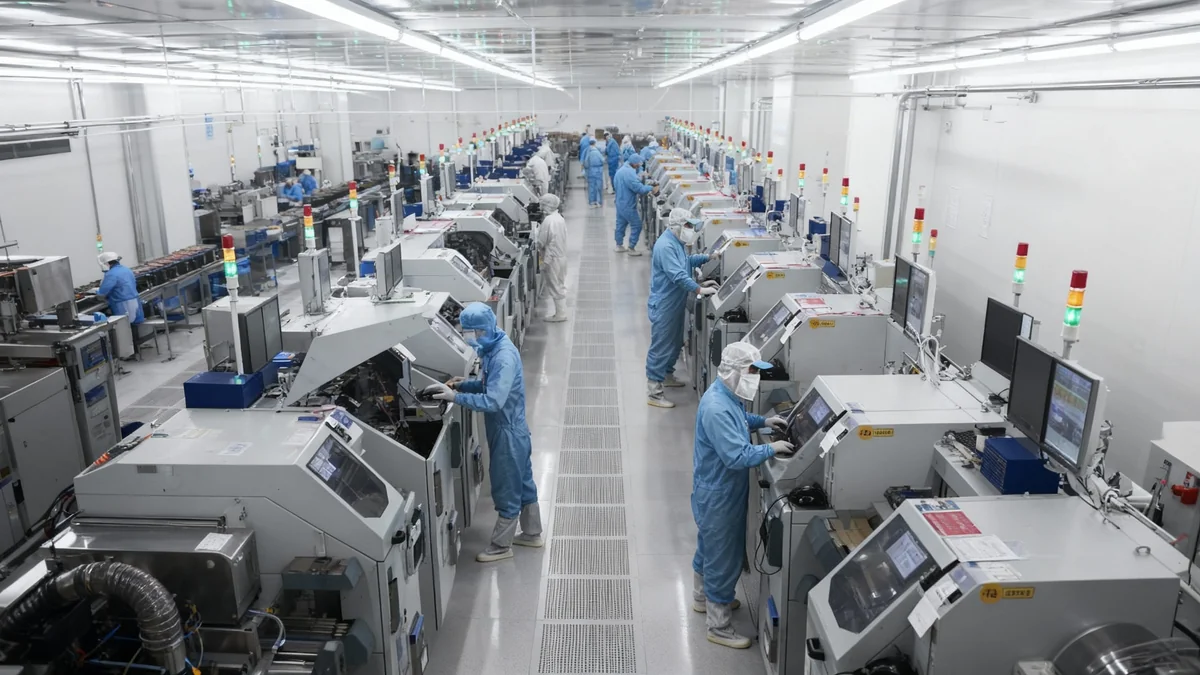The United States is implementing a new form of foreign policy in the Arabian Gulf, using artificial intelligence infrastructure as a primary tool for projecting power and influence. Instead of relying on traditional military installations, Washington is leveraging data centers, cloud computing access, and advanced semiconductor deals to align regional partners with its security interests and counter China's technological expansion.
Key Takeaways
- The U.S. is using AI infrastructure, including data centers and cloud services, as a tool of statecraft in the Arabian Gulf to build strategic alliances.
- A key example is Microsoft's $1.5 billion investment in Abu Dhabi's G42, which included governance conditions that pushed the company to sever ties with China's Huawei.
- U.S. policy has shifted from broad, restrictive controls under Executive Order 14110 to a more targeted approach that facilitates technology access for allies while remaining strict on China.
- This strategy aims to establish a U.S.-aligned technology ecosystem in a critical region, setting global standards for AI development and deployment.
- The long-term success of this approach depends on building resilient infrastructure and enforceable governance agreements that include technical safeguards and human rights standards.
The New Arena for Global Power
The competition between global powers is increasingly being waged not on battlefields, but within the climate-controlled walls of data centers. In this new landscape, racks of servers and graphics processing units (GPUs) hold strategic significance once reserved for military bases. The United States is actively using this new reality to its advantage in the Arabian Gulf.
This strategy, often called "silicon statecraft," involves using investments in AI infrastructure to create technological and political dependencies. By providing access to advanced American technology, Washington can guide the development of its partners' digital economies, embedding U.S. standards and security protocols in the process.
Why the Arabian Gulf is Critical
The Gulf region is a focal point for this strategy for several reasons. It offers abundant and affordable energy to power computation-heavy data centers. Furthermore, regional governments and sovereign wealth funds have demonstrated a strong appetite for large-scale investment in AI to diversify their economies away from fossil fuels.
Initiatives like Saudi Arabia's Humain, launched under its Public Investment Fund, and Abu Dhabi's MGX, which is backed by Mubadala and G42, highlight the region's commitment. These entities are actively seeking partnerships with Silicon Valley, creating an opportunity for the U.S. to become the foundational technology provider.
By being the first mover, the U.S. aims to establish its technology stack as the default in a strategic crossroads connecting Europe, Africa, and Asia. This creates a powerful network effect, making it more difficult for competitors like China to gain a foothold.
A Shift in U.S. AI Export Policy
The execution of this strategy has been shaped by evolving U.S. government policy. Initially, the approach was defined by broad restrictions aimed at preventing advanced technology from reaching adversaries.
Executive Order 14110, issued during the Biden administration, directed the Department of Commerce to increase oversight on the development of large AI models. This included new requirements for reporting foreign training activities and safeguarding sensitive AI model components, known as model weights.
While these measures enhanced security, they also introduced compliance hurdles for foreign partners. In the Gulf, where speed and local data hosting are priorities, these additional steps created delays and uncertainty. This situation inadvertently created an opening for Chinese competitors like Huawei, which could offer in-region solutions with fewer regulatory steps.
Policy Reversal and New Direction
In early 2025, the policy landscape shifted significantly. President Donald Trump revoked Executive Order 14110, signaling a move away from a centralized reporting regime toward a more streamlined process for trusted allies. In May 2025, the Commerce Department rescinded a pending rule that would have capped chip shipments, stating its intent to develop a simpler framework focused on restricting China while easing the path for partners.
This new posture is designed to accelerate the buildout of U.S.-aligned AI infrastructure in friendly nations. The message is clear: the U.S. will facilitate rapid access to its best technology for partners who align with its governance and security standards, while simultaneously tightening restrictions on China.
Microsoft and G42 A Case Study in AI Statecraft
The most prominent example of this strategy in action is Microsoft's $1.5 billion investment in G42, an AI firm based in Abu Dhabi. Announced in 2024, the deal was more than a simple financial transaction; it was a carefully constructed instrument of foreign policy.
As part of the agreement, Microsoft gained a seat on G42's board and secured specific governance assurances. Crucially, the partnership prompted G42 to divest from Chinese technology, most notably its ties with Huawei. According to White House officials, this outcome was a positive development for U.S. security interests.
"This is AI statecraft in practice, capital plus compliance that aligns a partner’s tech stack with U.S. security preferences."
The deal effectively tethered G42's operations to Microsoft's Azure cloud platform and subjected it to deeper audits and U.S. governance standards. Any U.S. approval for advanced chips sent to the Microsoft-run Emirati site comes with strict license conditions, including restrictions on facility access for personnel from embargoed nations.
Through this commercial agreement, key aspects of AI development—such as model access, data location, and administrator privileges—become policy levers that the U.S. can monitor and, if necessary, revoke. These frameworks create dependencies that establish American standards as the norm.
Building a Durable Framework Risks and Requirements
While this new form of statecraft is powerful, its leverage is also fragile. For the influence to be lasting, the underlying infrastructure must be both resilient and governed by enforceable rules. Without these protections, the data centers that project U.S. influence could become critical vulnerabilities.
Key Risks to Manage
- Resilience Risks: U.S.-backed data centers are high-value targets for cyberattacks, sabotage, and supply chain compromises. A major outage could shatter partner trust and provide a narrative victory for competitors.
- Governance Risks: Strict rules on paper can fail in practice. Poor security around AI model weights or weak key management could allow sensitive technology to fall into the wrong hands.
- Human Rights Risks: If partner nations use U.S.-provided AI for mass surveillance or political repression, it could trigger backlash from the U.S. Congress, potentially forcing a cutoff of access and fracturing the alliance.
To mitigate these risks, U.S. policymakers must establish a standard and enforceable deal architecture for all Gulf partnerships. This requires a combination of hard technical safeguards and strict governance requirements.
Proposed measures include keeping the most advanced AI models in hardware-bound secure enclaves, tracking the physical location and usage of all advanced accelerator chips, and embedding automatic "snapback" clauses in contracts. These clauses would automatically restrict access to technology if a partner violates the terms, such as by allowing a restricted vendor to access the system.
Furthermore, tying financing and cloud credits to clear human rights standards and acceptable use policies is essential for maintaining long-term political support for these partnerships in the United States.
The Strategic Stakes in the Gulf
The ongoing push by U.S. tech companies and the government into the Gulf's AI sector is about more than just market share. It is a strategic competition to define the global rules for a technology that will shape the future of economies and national security systems.
The Gulf region's unique combination of sovereign capital, low-cost energy, and political ambition makes it the ideal anchor for a U.S.-aligned AI corridor. This network could set the technological standards for a vast geographic area for a generation.
A New Form of Power Projection
As Alex Rough of War on the Rocks has argued, data centers should be treated as a modern battlefield. In the Gulf, they are both instruments of power and potential targets. The U.S. advantage lies in its ability to offer not just superior technology, but also a framework of enforceable governance and trust.
The ultimate test for American policymakers is whether they can transform these commercial deals into a durable strategic architecture. This framework must be resilient enough to withstand crises and strong enough to prevent partners from hedging their bets between Washington and Beijing.
If successful, this strategy of silicon statecraft will provide the United States with a quiet, scalable, and deeply embedded form of power projection perfectly suited for the 21st century.





